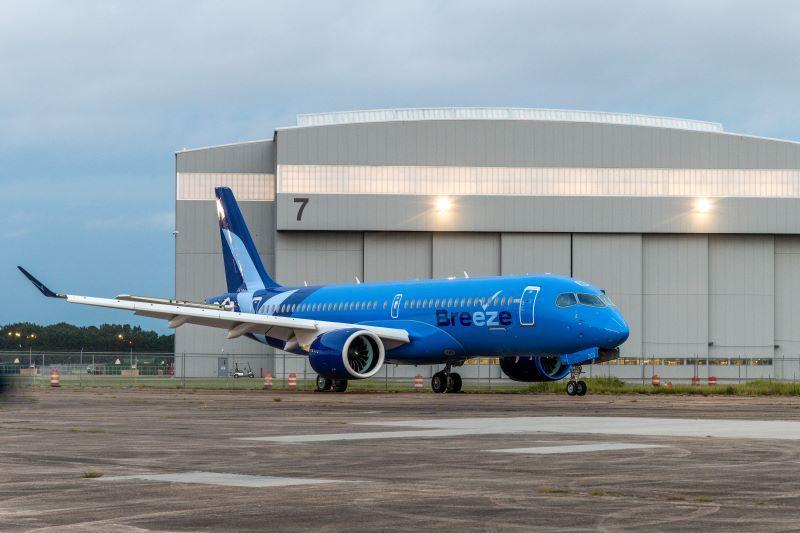Analyst: Breeze’s Westchester County Transcon Routes Ideal For Airbus A220

US startup Breeze Airways’ use of Airbus A220-300 aircraft to open transcontinental routes from Westchester County Airport (HPN) in New York demonstrates the aircraft’s capabilities to efficiently operate longer routes with smaller passenger loads, according to a leading industry analyst.
Breeze, launched in 2021 by JetBlue Airways and Azul Brazilian Airlines founder David Neeleman, last week announced that it would operate transcontinental routes out of HPN, located 35 mi. north of New York City. The carrier will start flying to Las Vegas (LAS) and Los Angeles (LAX) from HPN in September, and to San Francisco (SFO) from HPN in November.
Breeze will operate the only transcontinental routes from the airport, which has limits regarding aircraft size because of runway length.
Breeze has started taking delivery of the 80 A220-300s it has on order. Breeze’s A220’s are configured in a premium-heavy layout with 36 premium seats, 10 extra-legroom seats and 80 standard seats.
Speaking to the Aviation Week Network, Craig Jenks, founder and president of Airline/Aircraft Projects, expressed optimism about the planned transcon services from HPN, observing that travelers currently only have crowded Newark (EWR) and New York Kennedy (JFK) airports to choose from when traveling nonstop to the West Coast from the New York City area.
Jenks also called the new routes an “extremely apt” use of the A220-300’s capabilities, describing the type’s low noise footprint and enhanced runway compatibility as ideal fits for a smaller airport with a short runway like HPN, while still possessing plenty of range to travel coast-to-coast.
“The A220 will be the smallest transcon plane in service. This continues a downgauging and route fragmentation trend of transcons over time, from back in the days when transcons were all widebody,” Jenks said.
Jenks also said that HPN’s strict seat capacity limits—and the fact that transcon flights warrant different slot times compared to most of the airport’s existing flights—are elements working in Breeze’s favor when securing slot access there.
“You will probably find that Breeze is making use of asymmetry and the fact that slot utilization at [HPN] is very constrained by the needs of the Florida market and these other hub markets, and that leaves gaps,” Jenks said.
